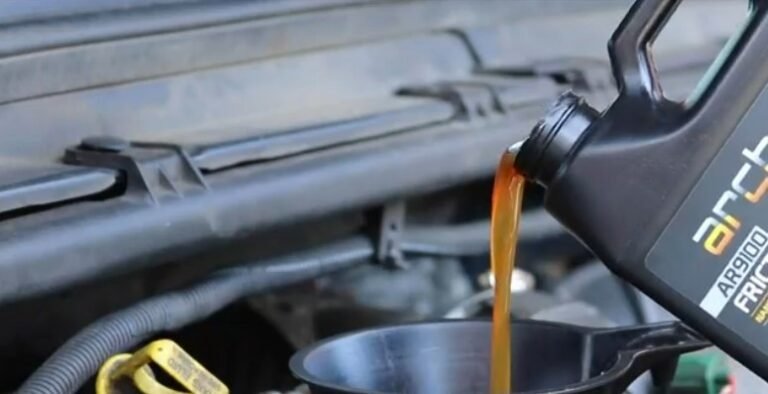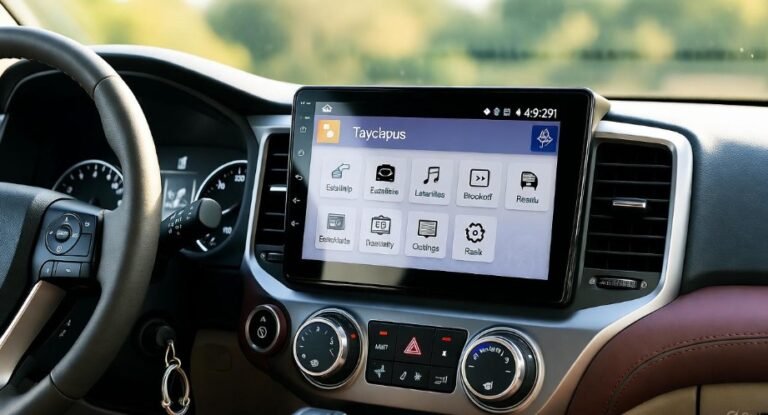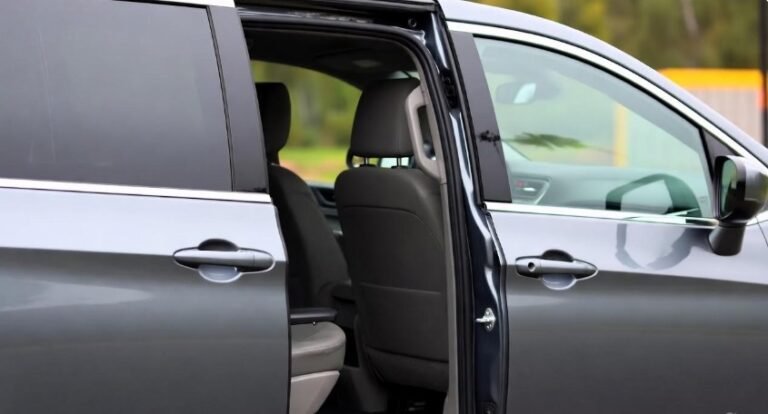How to Quickly Fix Electronic Throttle Control on Chrysler Town And Country

Owning a Chrysler Town and Country comes with its perks—spacious interiors, smooth rides, and a reliable family vehicle. But like any modern car, it isn’t immune to technical issues, particularly with the electronic throttle control (ETC). If you’ve noticed sluggish acceleration, unexpected stalling, or your dashboard warning light glowing, your ETC system may be acting up. The electronic throttle control regulates how much air enters your engine, directly affecting performance. When it malfunctions, even a short drive can feel unpredictable and unsafe.
The good news? Fixing throttle control problems doesn’t always mean expensive repairs or a trip to the dealership. With some basic diagnostic steps, careful inspection, and a little patience, you can identify the cause and get your Chrysler back to smooth operation. This guide will walk you through how to quickly fix electronic throttle control on Chrysler Town And Country, step by step, while explaining each process in simple terms.
Understanding Electronic Throttle Control in Your Chrysler
Before diving into repairs, it helps to understand what the electronic throttle control system actually does. Traditionally, cars used a mechanical cable to connect the gas pedal to the throttle. Modern vehicles, like the Chrysler Town and Country, rely on electronics. Here’s how it works:
-
The throttle pedal sends an electrical signal to the engine control unit (ECU).
-
The ECU calculates how much the throttle plate should open to control air intake.
-
The throttle body adjusts its position based on the ECU commands.
When any of these components fail, the engine may struggle to respond to your inputs. You might notice jerky acceleration, reduced power, or even complete engine stalls. Recognizing these early signs can save you from more costly damage later.
Step 1: Checking for Error Codes
The first step in diagnosing any throttle control problem is to check for error codes. Modern cars like the Chrysler Town and Country store diagnostic information in the onboard computer. By using an OBD-II scanner, you can read these codes and pinpoint the problem area.
Here’s a simple process:
-
Locate the OBD-II port, usually under the driver’s dashboard.
-
Plug in your scanner and follow the instructions to read codes.
-
Write down any codes that appear, especially those related to throttle control (codes often start with P0xxx).
Error codes can indicate a faulty throttle body, sensor issues, or wiring problems. Even if no codes appear, it’s still a good idea to visually inspect the throttle body and related components. Many drivers underestimate this step, but it’s crucial for efficient troubleshooting.
Step 2: Inspecting and Cleaning the Throttle Body
A dirty throttle body is one of the most common causes of ETC problems. Over time, carbon and dirt can accumulate on the throttle plate, restricting airflow and causing poor engine performance. Cleaning the throttle body is often a surprisingly effective solution.
How to clean the throttle body:
-
Gather tools: throttle body cleaner, a soft brush, microfiber cloth, and gloves.
-
Locate the throttle body behind the intake hose.
-
Spray cleaner on the throttle plate and surrounding areas.
-
Gently scrub to remove buildup without scratching the metal.
-
Wipe off residue and reassemble everything carefully.
After cleaning, start your engine and see if performance improves. A clean throttle body can often resolve minor ETC issues and restore smooth acceleration. Think of it like brushing your teeth—ignoring buildup over time leads to noticeable problems.
Step 3: Checking the Throttle Position Sensor (TPS)
The throttle position sensor measures how far the throttle plate is open and communicates this to the ECU. A faulty TPS can cause erratic throttle response or even total loss of power. Testing it is straightforward if you have a multimeter.
Testing the TPS:
-
Disconnect the TPS from its wiring harness.
-
Set your multimeter to measure resistance.
-
Slowly move the throttle plate while monitoring resistance changes.
-
Compare readings to the manufacturer’s specifications in your service manual.
If readings fall outside the recommended range, the sensor may need replacing. In many cases, a new TPS restores proper throttle response immediately. It’s a small component, but its impact on engine performance is huge.
Step 4: Inspecting Wiring and Connectors
Even if the throttle body and TPS are in perfect condition, damaged wiring can wreak havoc on the ETC system. Frayed wires, loose connectors, or corrosion can prevent accurate signals from reaching the ECU.
Inspection tips:
-
Follow wiring from the throttle body to the ECU.
-
Look for cracks, exposed wires, or burnt areas.
-
Check all connectors for secure fit and corrosion.
-
Clean connectors with electrical contact cleaner if needed.
Repairing faulty wiring may involve soldering, replacing connectors, or applying dielectric grease to prevent future corrosion. Small wiring issues are often overlooked but can be the hidden culprit behind throttle control warnings.
Step 5: Resetting the Throttle Control System
Sometimes, your Chrysler just needs a “reset” to recalibrate the ETC system. Resetting allows the ECU to relearn the throttle’s neutral position and can fix minor hiccups.
How to reset:
-
Turn off your engine and disconnect the negative battery terminal.
-
Wait about 15 minutes to allow the system to reset.
-
Reconnect the battery and start the engine.
-
Allow the car to idle for a few minutes so the ECU can relearn the throttle settings.
Many drivers report that this simple step resolves intermittent issues without replacing expensive parts. Consider it the automotive equivalent of rebooting your computer—it often solves problems you didn’t even know existed.
Common Symptoms of ETC Problems in Chrysler Town and Country
Understanding the warning signs can help you diagnose throttle control issues quickly. Watch for:
-
Reduced acceleration or sluggish response
-
Engine stalling at idle or low speeds
-
The ETC warning light on the dashboard
-
Jerky or uneven power delivery
-
Unexpected surges in engine speed
If you notice any combination of these symptoms, don’t ignore them. Driving with a malfunctioning ETC system can compromise safety and lead to further engine damage.
Cost Considerations for Fixing ETC Problems
Repair costs vary depending on the specific issue:
| Component/Service | Estimated Cost (Parts + Labor) |
|---|---|
| Throttle body cleaning | $50 – $100 |
| Throttle position sensor replacement | $75 – $150 |
| Wiring/connector repair | $50 – $200 |
| Full throttle body replacement | $250 – $400 |
It’s often worth starting with the least expensive fixes—cleaning the throttle body or checking sensors—before considering a full replacement. A careful, methodical approach can save hundreds of dollars and keep your Chrysler performing reliably.
Advanced Troubleshooting Techniques
If the basic steps—checking error codes, cleaning the throttle body, testing the TPS, inspecting wiring, and resetting the system—don’t resolve the issue, you may need to dig deeper. Advanced troubleshooting often involves using a diagnostic scan tool that can access live data from the ETC system. This allows you to monitor throttle plate position, pedal input, and ECU commands in real-time.
Look for patterns like delayed throttle response or inconsistent readings from the TPS. Sometimes, the problem only appears under load or at higher speeds. Keeping detailed notes during these tests can help a professional technician pinpoint subtle issues and prevent unnecessary part replacements.
When to Replace the Throttle Body
Even with careful cleaning, a faulty throttle body may still need replacement. Signs that replacement is necessary include:
-
Persistent stalling despite cleaning
-
Erratic or unresponsive acceleration
-
Continuous ETC warning light
Replacing the throttle body isn’t as daunting as it sounds. Most Chrysler Town and Country models allow easy access once the intake hose is removed. Disconnect the electrical connectors, remove the mounting bolts, and install the new unit. After replacement, don’t forget to reset the ETC system so the ECU can relearn throttle parameters.
Safety Precautions When Working on ETC
Working on electronic throttle components requires caution. A small misstep can lead to further damage or even safety hazards. Keep the following in mind:
-
Always disconnect the battery before touching the throttle body or wiring.
-
Avoid spraying cleaning chemicals on electrical connectors.
-
Wear gloves and safety glasses to protect against debris or cleaner sprays.
-
Double-check all connectors and bolts before restarting the engine.
These precautions aren’t just about avoiding injury—they also prevent accidental ECU faults that could trigger new error codes.
Benefits of Regular ETC Maintenance
Many drivers overlook the electronic throttle control system until a warning light appears. Regular maintenance can prevent costly repairs and ensure smooth performance:
-
Periodically clean the throttle body to avoid carbon buildup.
-
Inspect wiring and connectors during routine service intervals.
-
Test the TPS if acceleration feels sluggish.
-
Reset the ETC system periodically after battery replacements or major repairs.
Regular attention not only reduces the likelihood of sudden breakdowns but also extends the overall life of your Chrysler Town and Country. Think of it as tuning a musical instrument—small adjustments keep everything in harmony.
Seeking Professional Assistance
While many ETC issues can be resolved at home, there are cases where professional help is necessary. Certified mechanics have access to specialized diagnostic tools that can identify electronic and mechanical problems beyond what a DIY approach can reveal.
Situations that warrant professional attention include:
-
Persistent error codes despite cleaning and resets
-
Complex wiring issues requiring soldering or harness replacement
-
Throttle body replacement on newer models with integrated electronics
A professional technician ensures accurate repairs, saving time, money, and frustration in the long run.
Bullet Points: Quick DIY Checklist
Here’s a concise checklist for anyone attempting a quick ETC fix:
-
Scan for error codes using OBD-II
-
Clean throttle body and remove carbon buildup
-
Test and inspect throttle position sensor
-
Check all wiring and connectors for damage or corrosion
-
Reset throttle control system
-
Monitor for symptoms: stalling, poor acceleration, warning lights
-
Replace throttle body if necessary
-
Seek professional assistance if issues persist
This checklist is designed for clarity and efficiency—helping even a novice driver tackle ETC problems confidently.
Frequently Asked Questions (FAQs)
1. How Do I Fix Electronic Throttle Control in Chrysler Town And Country?
To fix ETC issues, start by inspecting wiring and connectors for damage. Next, clean the throttle body and test the throttle position sensor. If the problem persists, you may need to replace the throttle body assembly. Professional assistance is recommended if you’re unsure of any step.
2. Why Is My Chrysler Town And Country Showing an Electronic Throttle Control Warning?
The warning can appear due to a dirty or faulty throttle body, damaged wiring, or a malfunctioning throttle position sensor. Ignoring this warning can compromise acceleration and engine safety.
3. Can I Drive My Chrysler With an ETC Warning Light On?
It’s not recommended. Driving with an illuminated ETC warning light can lead to unpredictable acceleration and potential stalling. Always resolve the issue before using the vehicle.
4. How Much Does It Cost to Fix Electronic Throttle Control?
Repair costs vary. Cleaning the throttle body may cost $50–$100, TPS replacement $75–$150, and a full throttle body replacement $250–$400. Labor rates depend on your local service center.
5. How Often Should I Clean the Throttle Body?
It’s ideal to inspect and clean the throttle body every 30,000–50,000 miles or during routine maintenance. Carbon buildup occurs gradually, so regular cleaning prevents performance issues.
6. Can I Reset the ETC System Without Disconnecting the Battery?
Some models allow a throttle relearn procedure using specific accelerator pedal cycles or diagnostic tools. However, disconnecting the battery for 15 minutes is a simple and effective method for most Chrysler Town and Country vehicles.
7. What Tools Do I Need for a DIY ETC Fix?
Basic tools include a throttle body cleaner, soft brush, multimeter for testing the TPS, OBD-II scanner for error codes, and standard hand tools for removing the throttle body. Safety gloves and glasses are recommended.
8. Will Replacing the TPS Solve All Throttle Issues?
Not always. A faulty TPS can cause many symptoms, but if wiring, connectors, or the throttle body itself are compromised, replacing the sensor alone may not fix the problem. Comprehensive inspection is crucial.
Final Thoughts
Addressing electronic throttle control issues promptly is key to maintaining safety and performance in your Chrysler Town and Country. From scanning error codes and cleaning the throttle body to inspecting sensors and wiring, many fixes are straightforward and cost-effective. More complex problems may require a professional touch, but knowing what to look for can save time and money.
Think of your ETC system as the lungs of your vehicle. When they work properly, your Chrysler breathes smoothly and performs at its best. Ignoring warning signs is like holding your breath underwater—it’s uncomfortable, risky, and eventually unsustainable. By taking these steps, you’re ensuring your car runs efficiently, safely, and reliably for years to come.
Remember: stay safe, follow proper precautions, and don’t hesitate to seek professional help when needed. Your Chrysler Town and Country deserves care, and a well-maintained ETC system is essential for a smooth, worry-free ride.






